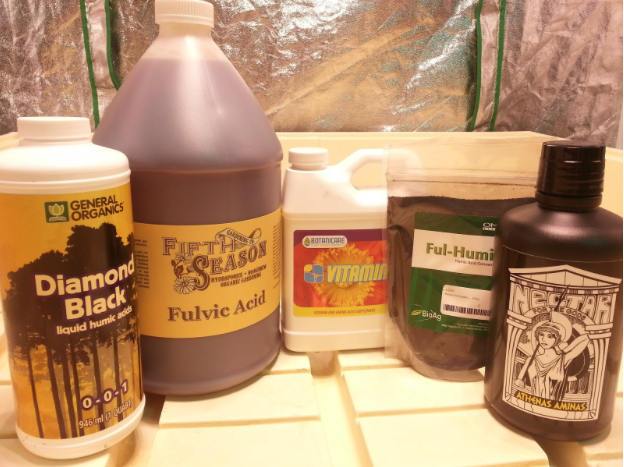Chelation: the interaction between a metal ion and a chelating agent.
Chelating Agent: Chemicals that form soluble, complex molecules with certain metal ions, inactivating the ions so that they cannot normally react with other elements or ions.
Now that we’ve gotten the definitions out of the way, here’s a quick explainer on why understanding chelation (key-LAY-shun) is vital for hydroponics gardening:
The nutrients you mix up to form solutions in water are charged metal ions. These ions can and will interact with other chemicals (and pH) in the solution.
So what? Take a look at your micro nutrient source; see sulfur and calcium in there? Well, if calcium and sulfur interact they become an insoluble compound (gypsum). Gypsum, because it is water insoluble, can not be uptaken by the plant, which means your plant no longer has access to calcium or sulfur.
Enter Chelation. Chelating agents help prevent these kinds of interactions from happening, make sure nutrients are available to the plant. The more access your plant has to its food, the more likely it can grow to its highest potential.
Two of the most popular, natural, chelating agents are Humic Acid and Fulvic Acid. Humic Acid is soluble in pH 6.0 and above (ideal for soil), and Fulvic Acid is soluble in all pH ranges (ideal for hydroponics and soil).
Amino Acids are another form of popular chelating agents that are most effective in pH ranges of 5.0 – 7.5. Unlike other chelators, the plant will absorb the Amino Acids along with the metal they are protecting. As plants can get “full” of these acids, it is important to have the metals available in other forms. In short, a combination of traditional metal chelation and Amino Acid chelation is ideal.
The most common synthetic chelating agents are EDTA, DPTA, and EDDHA. As you can see on most labels, hydroponic nutrients often make use of these synthetic chelating agents (frequently paired with calcium and iron). Note: plants do not uptake EDTA – once a plant takes up a metal bound by EDTA that EDTA molecule will then interact with another metal ion back in solution.
For those of you running flood and drain: the above listed synthetic chelators break down when exposed to UV light. Nutrient solutions in these systems risk losing their chelators when the solution is exposed to the UV light emitted by HID bulbs.
In the end, make sure your plants can actually eat what you feed them.


Marcus Harper says
Thank you so much. This information on chelation helped me improve my nutrient solution formulation.
Michael H. says
Thank you so very much for your explanation on synthetic and organic chelators. You made a complicated (IMO) subject very easy to understand.
ashley says
Glad you enjoyed the post, Michael!
S D JADHAO says
Thanks…for brief and concise explanation about chelators…